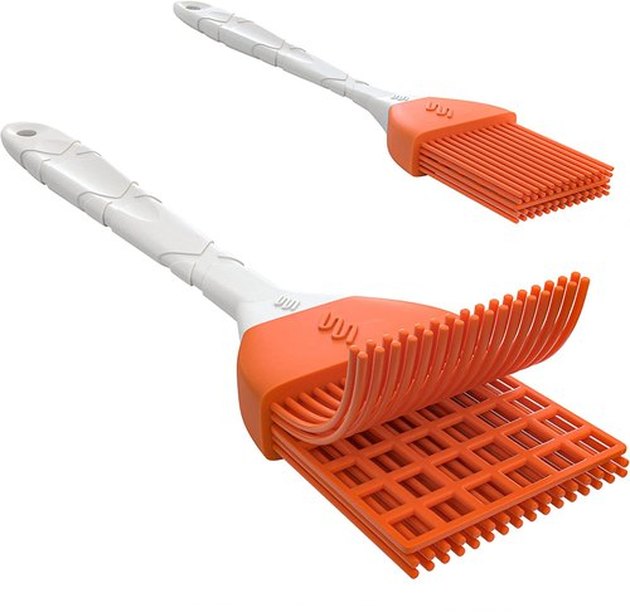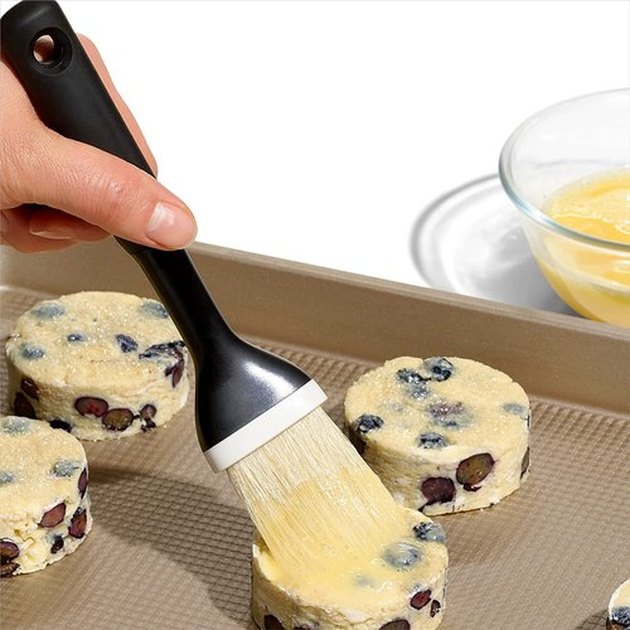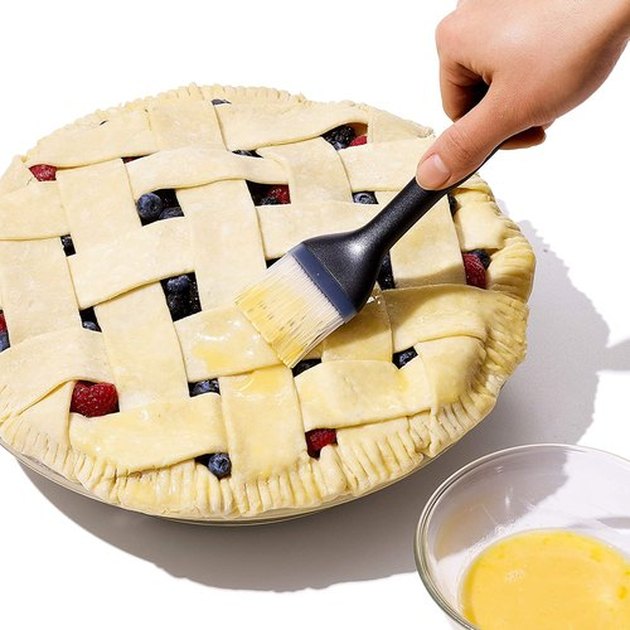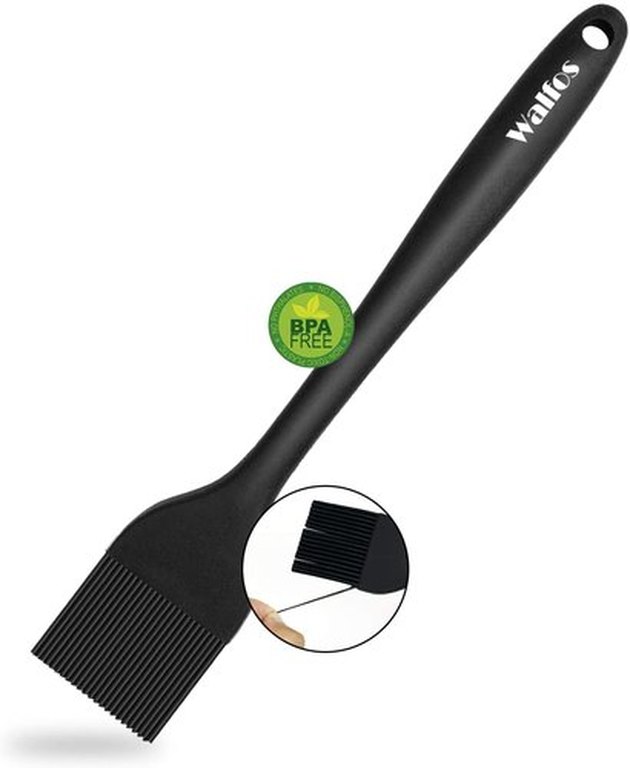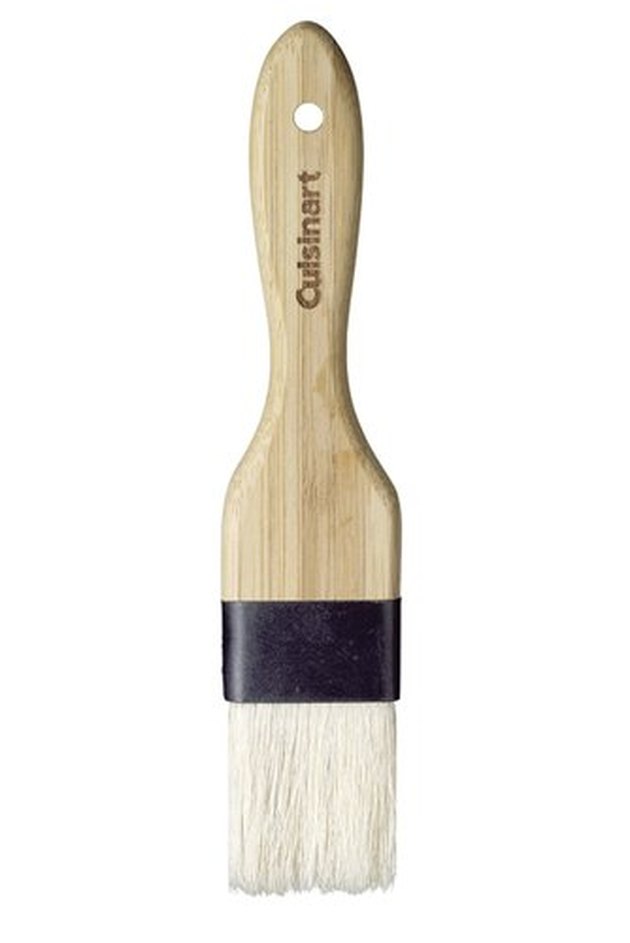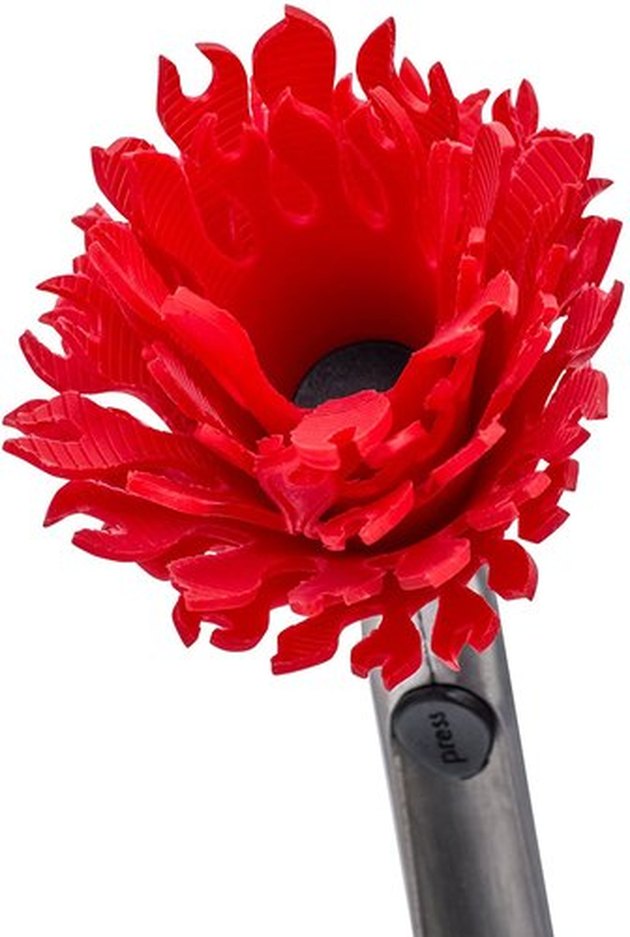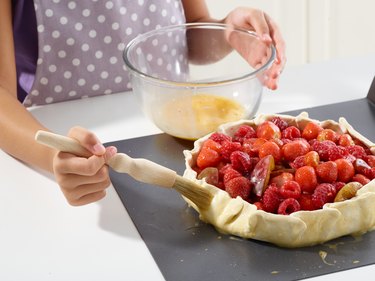
You might associate brushes primarily with artists, but hey ... cooking and baking are referred to as "culinary arts," aren't they? Brushes might not be the very first thing you buy for your kitchen, but most cooks or bakers need to keep a few of them around. You might use them for brushing melted butter on your biscuits or milk onto your loaves; for basting a roast with its drippings or your ribs with barbecue sauce.
Either way, a well-chosen brush or two can help make cooking and baking more enjoyable. Using the right brush for the right task means you'll get the right coverage every time with minimal effort. To help you with that (because unless you're a pro, how the heck do you choose one brush over another?), we've compiled a list of the best basting brushes and pastry brushes, along with the reasoning behind our choices.
Video of the Day
Video of the Day
What to Consider When Purchasing a Pastry or Basting Brush
The biggest thing to consider, when you're picking out a brush, is what you're going to use it for. Some make better pastry brushes and others make better basting brushes, and a select few are suitable for either use. Just to be clear, that doesn't mean you'd want to use the same brush for both jobs: No matter how good your homemade barbecue sauce is, its flavor would probably clash with your apple pie or cherry Danish.
Here are a few other details you'll want to consider as you pick your brushes:
Bristle Material: Traditionally, brushes for the kitchen were made from durable, heat-resistant boar's hair. Many of them still are, but you'll also find brushes with synthetic bristles of nylon or silicone. A few even mix nylon with boar's hair, to combine the virtues of both. Nylon bristles are fine and are typically used as a like-for-like replacement for boar. Silicone bristles are thicker and clumsier, usually found only on brushes meant for basting. Nylon and boar's hair are dual-purpose brushes and can be used for pastry or basting, though nylon tends to frizzle at high temperatures.
Handle Material: The old-school option was a wooden handle, ideally beech, maple or another durable, moisture-resistant hardwood. Contemporary brushes still use wood, but nylon, steel and silicone (over a rigid core) are also common. Stainless is beautiful and sleek but can be slippery in your hand. Nylon can melt and wood can burn if they come into contact with a heat source, so that's something to consider.
Shape, Size and Ergonomics: This is something of a catchall for "look and feel," but those are important. Handles can be round, flat or shaped into a finger grip; they can be short (for deft use on a countertop) or extra-long (for the grill); and may be too large or too small to fit your hand comfortably. Then there's the brush's shape, with some opting for a wide, flat stroke (good coverage) and others remaining small and round (for precise control). Additionally, brushes made with grilling in mind may have the head set at an angle so you can apply a glaze or sauce without holding your hand over the flames.
Cleanability: Brushes made with natural boar's hair and wooden handles will need to be hand-washed every time, otherwise they'll quickly wear out (and start shedding bristles on your food). Brushes with synthetic bristles and plastic or metal handles are more likely to be machine-washable, which saves work and sanitizes the brush's head. Also, look at how the bristles are set into the handle. Synthetics can be (but aren't always) mated to the handle with a seamless base, making them more sanitary.
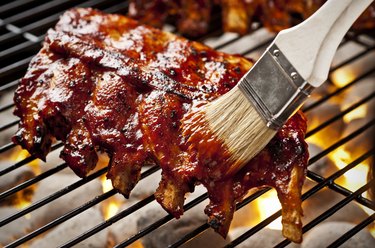
The Best Overall Pastry/Basting Brush
Natural or nylon bristles are usually best for pastry use because they're better at holding thin liquids (milk, melted butter) than silicone bristles. These economical brushes from M Kitchen World turn that logic on its ear, adding a waffle-grid insert between the rows of bristles to help hold more of your milk—or sauce, or whatever—in place. This makes them a solid all-rounder, with silicone bristles that will stand up to the heat of the grill as well. The handles are soft and comfortable, you'll never pick a stray bristle out of your ribs, and the one-piece heads eliminate the nooks and crannies where food and bacteria love to hide. The set of two gives you a small brush for delicate work and a wider one for full coverage, and best of all, they're dishwasher-safe.
The Best Natural Bristle Pastry/Basting Brush
For pastry purists, there's no substitute for natural boar-hair bristles. They hold more liquid for brushing, stay soft and flexible after repeated use, and nothing gives finer control for delicate work. Traditional versions use a straight, hardwood handle, but OXO's Good Grips brush—our favorite in this category—breaks with tradition, and is all the better for it. The handle is as comfortable as you'd expect in a Good Grips product, and more importantly, the head is set at an angle to the brush. This is helpful when you're actually using the brush, and keeps the bristles up off of your counter when you set it down between tasks. It's also dishwasher-safe, which wood-handled brushes typically are not.
The Best Silicone Pastry/Basting Brush
Pastry purists notwithstanding, there's a lot to like about silicone pastry brushes as well. First and foremost, they're less likely to stain and retain smells after washing (and on that note, they're more likely to be dishwasher-safe). They're also better for high-heat use, making them solid all-rounders in the kitchen. OXO's Good Grips silicone brush is an exact twin to our pick in the natural-bristle category, but with silicone instead. Like our top overall choice, there's a waffle grid nestled between the bristles to help retain liquid, and an angled handle to keep your brush off the counter. Price and value were the only things standing between this brush and our top-overall rating. Oh, and there's also a large version of the OXO brush if you want one that's better for basting and grilling.
The Best Value Pastry/Basting Brush
Despite the low price, there's a lot to like about this brush. The design is simple and practical, with a stainless-steel core underneath a brush and handle that's manufactured as a single piece. That means no seams where food and bacteria can stick, and no chance of the brush head (or its bristles) coming off while in use. It's also completely dishwasher-safe, which makes it an even better bet on the food safety front. Running it through the dishwasher also means it shouldn't retain food odors or tastes, though a "sniff test" is always a good precaution. The only downside is that the handle is a bit long, at over 8 inches. That keeps your hands away from the heat when you're basting, but it can be inconvenient for pastry work.
The Best Eco-Friendly Pastry/Basting Brush
If you're the kind of cook or baker who insists on sustainable ingredients, why stop there? An increasing number of kitchen utensils are made with sustainability in mind, and these brushes are a fine example. The bristles are natural (and biodegradable) boar hair, the handle is bamboo—very renewable and sustainable, with its fast growth—and even the Cuisinart branding is printed with soy-based ink. Aside from its materials, it's a very traditional pastry brush, excellent for detail work and tight spaces. Despite the low price, it's surprisingly durable, and visibly better made than comparable brushes at the price point. The only downside is that you'll need to hand-wash it (as soon as possible after use) because, like other natural brushes, running them through the dishwasher ages the handle prematurely and usually results in bristles falling out.
The Best Pastry/Basting Brush Set
These colorful brushes have a lot in common with our value pick, the Walfos, but as a set of four, they offer even better value. Like the Walfos, the brushes are all made in a single piece, which means they're sanitary and easy to keep clean. They're also completely dishwasher-safe and high-temperature safe. The set of four includes one longer brush for use on the grill and three shorter ones for general-purpose cooking or baking use. The cheerful colors aren't just for aesthetics, they also serve a purpose for food safety: Think of them as color-coding, so you can keep each one for a different task and avoid the risk of cross-contamination while you cook. It's also a good way to keep the one you use for your tarts separate from the one you use with spicy, garlicky marinades (definitely a win-win).
The Best Basting Brush for Traditional Barbecue
Any long-handled brush will work for basting a steak or chicken leg on the grill, but what about traditional barbecue, or whole birds? If you're looking for a brush that carries copious quantities of tasty sauce at one splash, this is the one you need. Most sauce "mops" are exactly that: Miniature mop heads, hard to clean and a magnet for bacteria. This one's completely different, looking instead like a big silicone flower blossom with flame-shaped petals. The clustered bristles hold a really startling amount of sauce, perfect for mopping a brisket or pork shoulder during a long, slow cook, or quickly slathering your ribs with thick, sticky sauce at the last minute. The replaceable head can be removed and run through the dishwasher, for easy clean-up (you won't need to find space for the 18-inch stainless steel handle). Brush meets mop, for a near-perfect barbecue accessory. The handle even doubles as a bottle opener!
